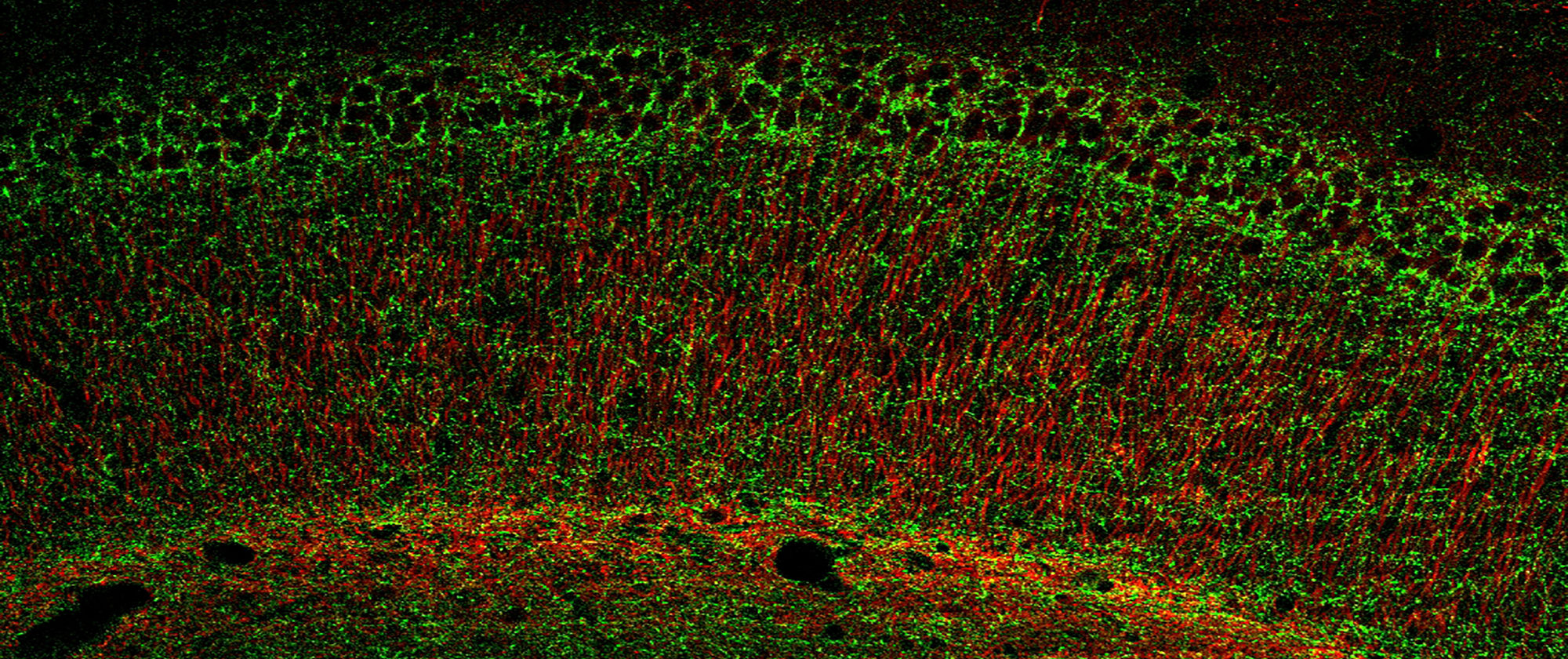In this image we can seee the cannabinoid CB1 receptor (green) and the MAP-2 protein (red) in the hippocampus of a Down syndrome model mouse.
The hippocampus is a brain area with a key role in memory. Two young PhD students, Alba Navarro-Romero and Anna Vázquez-Oliver from the Neuropharmacology-NeuroPhar Laboratory of the Department of Experimental and Health Sciences, Pompeu Fabra University (DCEXS-UPF) led by Andrés Ozaita and Rafael Maldonado, have recently observed that Down syndrome model mice – both males and females – had more cannabinoid CB1 receptors in the hippocampus, and that they were more active. In addition, they were able to demonstrate that by inhibiting the CB1 receptors, both genetically and famacologically, the memory problems of mice were reduced.
Down syndrome model mice have more CB1 receptors in the hippocampus.
The study also included scientists from the Pablo de Olavide University, the Hospital del Mar Medical Research Institute (IMIM), the Centre for Genomic Regulation (CRG), the Universitat Autònoma de Barcelona (UAB) and the French INSERM.
Would you like to see your photo here? Please send us pictures related to science or the PRBB to ellipse@prbb.org.
Alba Navarro-Romero, Anna Vázquez-Oliver, Maria Gomis-González, Carlos Garzón-Montesinos, Rafael Falcón-Moya, Antoni Pastor, Elena Martín-García, Nieves Pizarro,Arnau Busquets-Garcia, Jean-Michel Revest, Pier-Vincenzo Piazza, Fátima Bosch, Mara Dierssen, Rafael de la Torre, Antonio Rodríguez-Moreno, Rafael Maldonado, Andrés Ozaita. Cannabinoid type-1 receptor blockade restores neurological phenotypes in two models for Down syndrome. Neurobiology of Disease, January 2019. DOI: 10.1016/j.nbd.2019.01.014.






